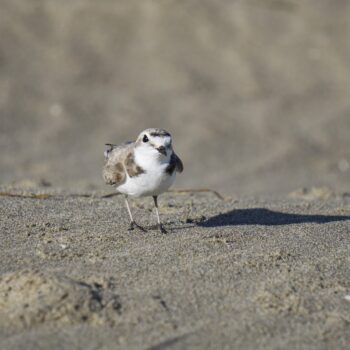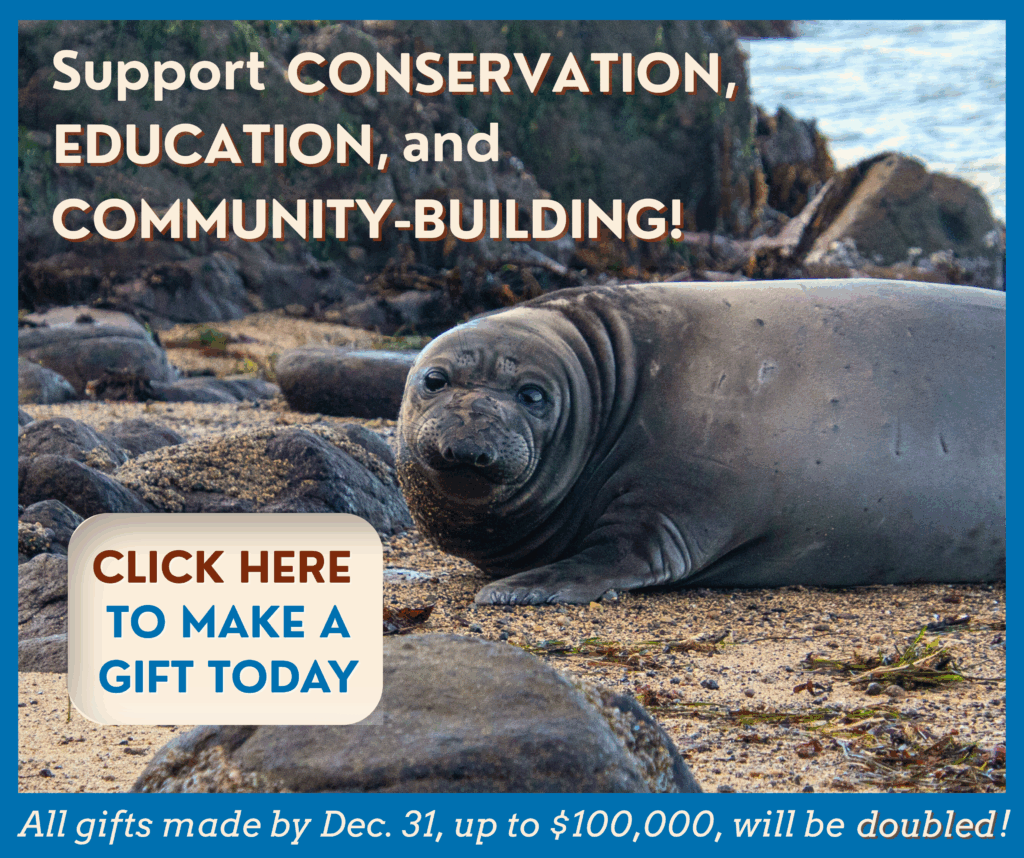Point Reyes National Seashore, the ancestral land of the Coast Miwok, sits on the rugged California coast and is just a short drive from the greater San Francisco Bay Area. Rich in history and biodiversity, Point Reyes is the perfect outdoor classroom. The Seashore offers hiking trails across nearly 70,000 acres of wilderness, mountains, beaches, complex dunes, marshes, and scrub. It offers coves and bays for kayaking, trails for equestrians, and opportunities to see hundreds of bird species, tule elk, seals, sea lions, badgers, bobcats, otters, and more – it’s no surprise the Seashore is part of the Golden Gate Biosphere Reserve.
Seashore Conservation
Video By: Pusher, Inc.
What We Do
Point Reyes National Seashore Association (PRNSA) works year-round in partnership with the National Park Service (NPS) to protect and monitor the park’s natural and cultural resources. We secure funding from private donors, government grants, and foundations to hire seasonal field staff who work alongside NPS project managers on conservation initiatives. These efforts include habitat restoration, invasive species removal, historic preservation, and research on rare, threatened, and endangered species. Key programs focus on long-term inventory and monitoring of species such as salmonids, northern spotted owls, harbor seals, and snowy plovers, as well as vegetation management and early detection of invasive plants. Many of these initiatives follow peer-reviewed protocols to track ecological trends and guide conservation strategies.

Our 2025 Priorities
- Dune Restoration & Invasive Plant Treatments – Controlling invasive species to restore native plant communities along Great Beach and Abbotts Lagoon.
- Black Rail Surveys – Studying threatened black rail populations before and after habitat restoration at Giacomini Wetlands.
- Grassland Restoration Research – Enhancing native seed stock and biodiversity for future restoration.
- Myrtle’s Silverspot Butterfly Study – Understanding how this federally endangered butterfly responds to dune restoration efforts.
- Biological Soil Crust Research – Investigating the role of lichen and moss in stabilizing restored dunes.
In addition to PRNSA’s year-round fundraising efforts to sustain vital research, education, and resource monitoring, we are seeking ongoing support to ensure we can bring these exciting projects to life this year.
Species and resources that we help protect:
flora
fauna
CULTURAL RESOURCES
Science Communication
The translation of hard science into digestible, public outreach materials is essential to the preservation of natural and cultural resources at Point Reyes. Each year, PRNSA funds Science Communication Internships to help young professionals learn environmental outreach strategies and techniques for communicating important park science. Here are some of their projects:
Soundscapes of the Seashore
StoryMap, Avani Fachon
Reviving Eelgrass at Drakes Estero
Article, Avani Fachon
Vital Signs & Climate Change
StoryMap, Avani Fachon
Protecting the Health of a Diseased Forest
StoryMap, Claire Baker
In the Weeds on Invasive Plants (Scotch Broom)
Article, Claire Baker
Climate Change Effects on Elephant Seal Habitat
Article, Claire Baker
The Space Between Land and Sea (Snowy Plovers)
Article, Claire Baker
An Upstream Battle Against Climate Change
Article, Claire Baker
A History of Black Abalone in California
Podcast, Theodora Mautz
Recovering the Black Abalone Species
Podcast, Theodora Mautz
Community Science at the Seashore
StoryMap, Theodora Mautz
The Duality of Black Abalone in California
Article, Theodora Mautz
The Legacy of Fire at Point Reyes National Seashore
Podcast, Jerimiah Oetting
New Growth After Wildfire at Point Reyes
Podcast, Jerimiah Oetting
How Wildlife Withstand Wildfires
Podcast, Jerimiah Oetting
Interested in joining PNRSA’s conservation staff – either in the field or as a science communication intern? Check our frequently updated jobs website page for conservation opportunities.



















